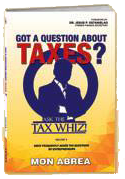Last Sunday, Ariel returned to LandBank to open his Unit Investment Trust Fund (UITF) account assisted by Ms. Vangie Illustrisimo, Trust Sales and Marketing Officer. Armand Bengco, our Executive Director at Colayco Foundation also gave him some advice on how to deal with his personal debt. With a minimum of Php10k, Ariel was able to buy shares in a UITF.
Again, there are different types of UITF depending on your ability to take risks. UITF have no guarantees but it is unlikely that you will lose your investment if you keep it over the long term. The market price of UITF shares goes up and down. Your gains or losses on your investment will only happen when you sell your shares. You have to sell at a price higher than your average purchase price. If you sell at a price lower than your average purchase price,purchase price, you can lose money. The risk is really your ability to hold on to your investment until the price goes up.
Tomorrow July 20, Ariel will be involved in trying to put up a business. As usual, he will do what he wants without much preparation and make his mistakes. Eventually, he will realize those mistakes and have a good learning experience.
Catch Nang Magising si Juan tomorrow, 8:00 am at GMA News TV!
Nang Magising si Juan would like to thank it sponsors Bulgar, Bounty Fresh Chicken Chooks-to-Go, Mang Inasal, Landbank of the Philippines, and many more!

 many units of products you need to sell at a given unit price) so that you will be able to sustain your business. Break-even does not mean you are losing money but it also does not mean that you are making money. If your sales are below your break-even, you will be incurring losses and if it is higher, your will be making money.
many units of products you need to sell at a given unit price) so that you will be able to sustain your business. Break-even does not mean you are losing money but it also does not mean that you are making money. If your sales are below your break-even, you will be incurring losses and if it is higher, your will be making money.